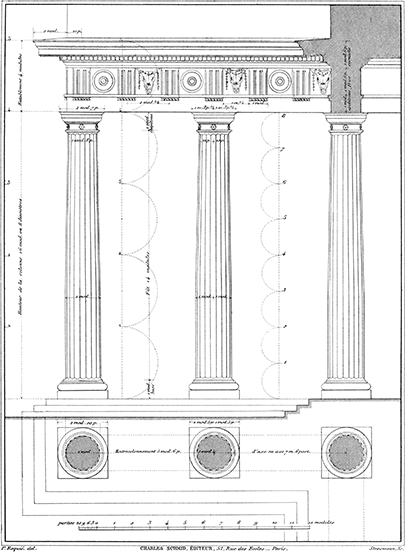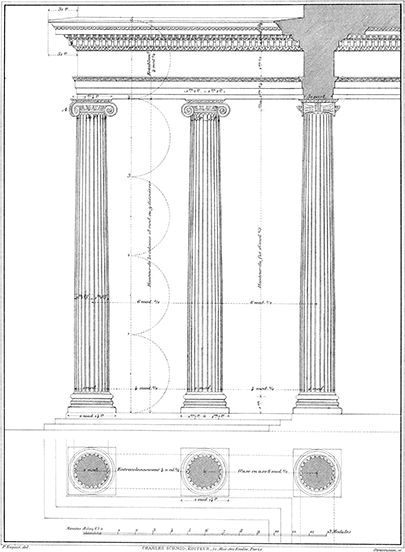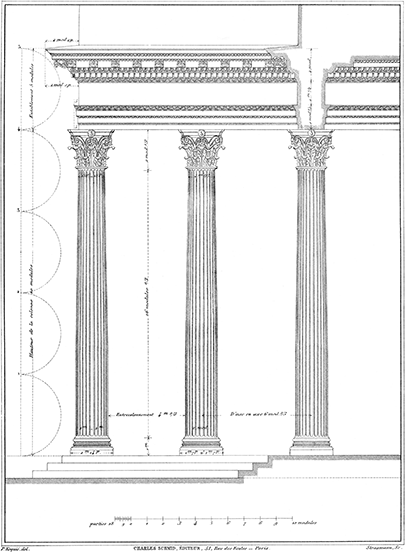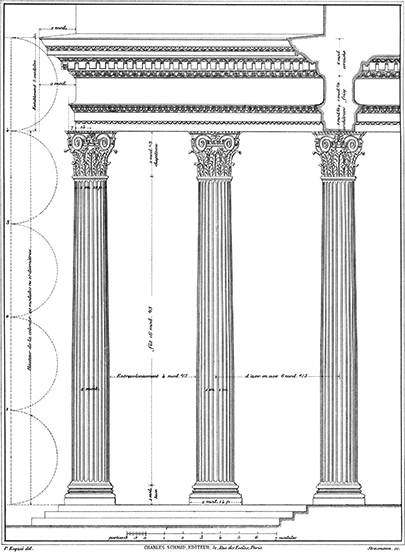44
The Five Orders
Perhaps the only treatise on architecture surviving classical antiquity was Marcus Vitruvius Pollio’s De architectura,1 written around 25 BC. Among the many things described in De architectura were Greek and Latin architectural proportions.
De architectura was known to have been transcribed by Charlemagnes palace scriptorium in the early ninth century and the friar Vincent of Beauvais refers to it in his monumental 13th-century compendium Speculum maius, but for the most part the work remained largely forgotten until it was “rediscovered” in 1414 by the Florentine humanist Poggio Bracciolini.
It didn’t matter that Vitruvius was a minor Roman architect, the 15th century humanists and architects instantly considered him as the authority on classical orders and architecture. His descriptions of Greek and Latin columns were systematized by the Renaissance architects into the so-called five orders.
Giacomo Barozzi da Vignola, the 16th century Italian architect, for example, based his classic Regole delli cinque ordini d'architettura on new measurements of Vitruvius’s descriptions. Vignola’s work, and his description of the five orders, would became a standard architectural reference for the next three centuries.
The plates presented here are from a rather loose 1921 English translation2 of an 1897 French translation of the original 1562 Italian Vignola text.
TUSCAN
Greek
DORIC
Greek
IONIC
Greek
CORINTHIAN
Roman
COMPOSITE
Roman
n = 5
1. Vitruvius’s De architectura (Ten books of Architecture) describes not just Roman architecture, but also town planning, civil engineering, surveying, machines and technology, astronomy, even human proportions. The latter of which formed the basis of Leonardos’ famous drawing, appropriately known as Vitruvian Man. De architectura was translated by the Harvard classics scholar Morris H. Morgan in 1914. It is available online at the Project Gutenberg. Bill Thayer, on his LacusCurtius site, has a linked English-Latin translation of the 1899 Teubner text.
2. Powell, William R. Vignola: A Treatise on the Five Orders of Architecture. Cleveland, Ohio: J.H. Jansen, 1922. From: Esquié. Traité élémentaire d'architecture, comprenant l'étude complète des cinq ordres, le tracé des ombres et les premiers principes de construction. Paris: Ch. Massin, 1897. It should be noted that Powell’s was one of several English translation of Esquié published around the turn of the century.
12 Nov 2009 ‧ Lists & Tables




